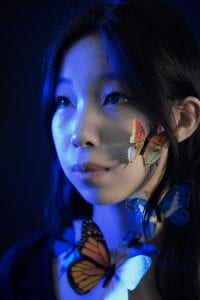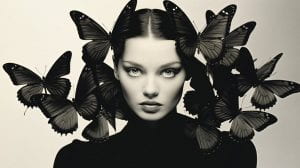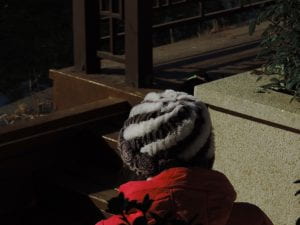


























Evaluation:
Overall, my final photosets compared to the practice photos turned out a lot more detailed and professional. They met more of my expectations and techniques during my planning stage. For example, the lighting, angles, and point of focus. I used three lights in the studio room, the blue one is placed diagonally towards the left back, while the two other warm lighting are placed at the right back and in front of the face. This can create a light reflection on the hair, and eyes, and also emphasize the facial features. For my final sets, I really made sure there were several changes in angles and different degrees of closeness. The point of focus is on the face, which means that I can alter a variety of angles and close-ups to demonstrate the beauty of the face for visual purposes. An extra technique I used that was not included in my practice photos was using colored silk to cover the camera lenses. This technique was something I discovered in the past, I wanted to use this technique again to make a natural filter and a gloomy camera effect.
The poses of the model are highly inspired by Richard Avedon’s photos, for instance, the facial expression in photo number 4 is taken based on the photo of Marilyn Monroe. The photo is portrayed as a wistful, distant figure – eyes lowered and fixed in the distance, and shoulders slumped. Additionally, Avedon’s photo of the woman with the butterflies is also inspirational for the last photo both from the concept of butterflies and the facial expression. It reminded me that the eyes and sharp have to be bold, which is something I kept repeating to my model.
The connection between my photos and the theme of coexistence are essentially connected because of the peaceful atmosphere between the humans and the butterflies existing in one portrait. This shows a dynamic but sustainable image where humans and wildlife co-adapt to living in shared landscapes. The interactions with wildlife indicate that appreciating and caring for the natural world is a beautiful, positive, and high-quality sense of harmony. Ultimately, these photos encourage the audience to reflect a genuine bond with nature.





















































































Recent Comments